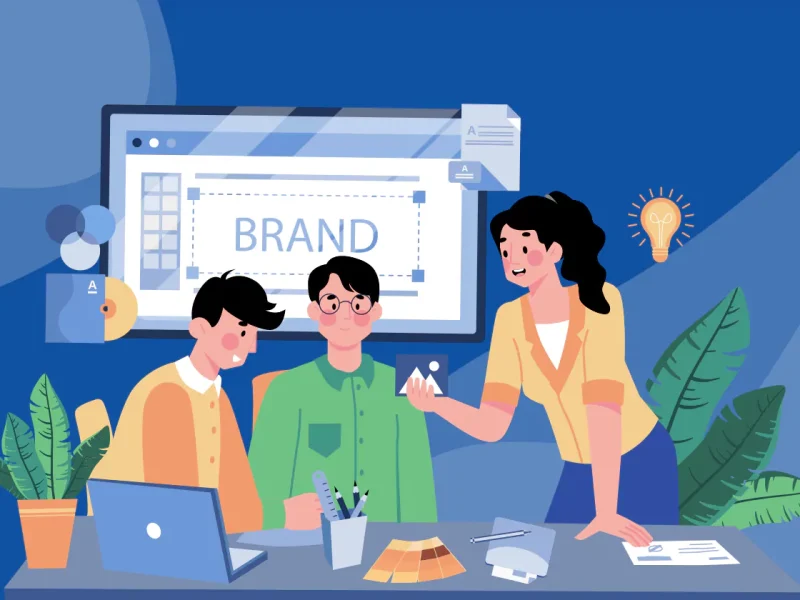Designing a great website isn’t just about building an online presence. It’s also a way to connect with all kinds of internet users, which is why one of your key considerations when developing your website is understanding that not all users are the same. Accessibility and inclusive website design are important to reach as many users as possible.
Website accessibility refers to the features that make your site usable for people with disabilities. It helps create an inclusive online environment that is accessible to people with diverse needs, allowing them to navigate the internet as seamlessly as those without impairments.
The impact of inaccessible websites
Inaccessible websites have a significant impact, as they exclude people with a broad spectrum of disabilities from accessing digital content. This creates barriers that prevent them from finding information, making online transactions, and fully participating in the digital world.
Inaccessible websites also lead to frustration and a sense of isolation for the people affected. And businesses and organizations with inaccessible websites may face legal consequences, reputational damage, or miss out on potential customers or clients who prefer or require accessible online experiences.
The benefits of website accessibility
Prioritizing website accessibility brings benefits to both businesses and individual users. And by embracing inclusive web design, businesses can reap the benefits of a more engaged and diverse digital audience.
Enhanced user experience (for everyone)
Website accessibility enhances the user experience for everyone, not just individuals with accessibility needs. Implementing inclusive design practices leads to cleaner layouts, clearer navigation, and better organized content.
Prioritizing intuitive and accessible design elements, like clear headings and descriptive link copy, makes it easier for everyone to find and understand information. And as a result, everyone will find your website more enjoyable and easy to use.
Increased reach and engagement with a broader audience
When websites are accessible, users with disabilities and different access needs can engage and interact with content, products, and services.
Accessible websites also attract users who value inclusive practices, and they are more likely to share their positive experiences. In turn, this leads to increased organic reach and word-of-mouth marketing.
Compliance with legal and ethical standards
As we’ve already mentioned, websites can avoid facing potential legal issues and fines by complying with accessibility standards. It also demonstrates an ethical commitment to inclusivity and equal access to information and services and reinforces the principles of non-discrimination and social responsibility. These are all factors that can lead to customer loyalty from users both with and without accessibility needs.
Better SEO
You might not know that website accessibility and search engine optimization (SEO) go hand in hand. Many accessibility features, like descriptive alternative text for images and well-structured content, improve the website’s visibility to search engines.
When search engines can better understand and index a website’s content, it increases the chances of higher rankings in search results. And improved SEO leads to increased organic traffic, visibility, and potential conversions.
Improved brand reputation and customer loyalty
By incorporating accessibility features into your web design, you can enhance your brand reputation and foster customer loyalty. Because, when businesses prioritize inclusivity and accessibility, they demonstrate a commitment to connecting with and serving diverse audiences.
The principles of website accessibility (POUR)
The four key principles of website accessibility provide a framework for designing and developing accessible websites. POUR stands for Perceivable, Operable, Understandable, and Robust.
Perceivable
This means that content is easily perceivable by all users, regardless of their abilities. By providing alternative information, like alt text for images, captions for videos, and descriptive headings, people with sensory impairments can access and understand the information more easily. Making content perceivable also benefits users in challenging or less accessible environments, like those with low bandwidth or using mobile devices.
Operable
User interface components and navigation must be operable and usable by various input methods, such as keyboard, mouse, and touch. The navigation should be logical and consistent, and users should have enough time to read and interact with the content.
Keyboard accessibility, clear and consistent navigation, and allowing sufficient time for users to interact with content all mean that users with motor disabilities or those who rely on assistive technologies can fully engage with the website.
Understandable
This principle focuses on making content and website functionality clear and easily understandable to all users. This involves using simple and consistent language, providing input assistance, and avoiding content that may cause confusion.
Robust
Content should be robust enough to be reliably interpreted by a wide variety of user agents, including assistive technologies. This means following standard HTML, CSS, and other web technology practices.
Robust websites are also future-proofed for accessibility, so they can adapt to evolving technologies and user needs more effectively.
Common barriers to website accessibility
The most common barriers to website accessibility include:
No alternative image text
Failing to provide alternative text for images creates a barrier for those with visual impairments who rely on screen readers. Without descriptive text, they are unable to understand the context and purpose of the image.
Insufficient color contrast
A lack of color contrast between the text and the background of a page makes it difficult for people with low vision or color blindness to read content.
Inaccessible forms and input fields
Lack of proper labeling, clear instructions, or inaccessible error messages on forms and input fields can make it frustrating or impossible for those using assistive technologies to complete forms accurately.
Unclear link text
If your link text is non-descriptive or vague, like “click here” or “read more”, it can create confusion for people using screen readers or those with cognitive disabilities. Descriptive link text helps give context and allows users to understand the purpose of the link, without relying solely on surrounding content.
Inconsistent structure and headings
Inconsistent or incorrect use of heading tags and content structure can make it difficult for anyone using assistive technologies to navigate and understand the content on your site.
How to create an accessible website
Creating an accessible website involves a number of key steps:
Design with inclusivity in mind
Be sure to incorporate accessibility considerations from the get-go. During your initial design phase, prioritize intuitive and user-friendly interfaces, clear navigation, and a consistent layout that will make your site more accessible for all users.
Use semantic HTML
The code you use to create your website might not seem relevant to the site’s overall accessibility. But by utilizing proper HTML tags to structure content, like headings, lists, and semantic elements, you can provide context and make navigation easier for everyone—especially those using screen readers or other assistive technologies.
Provide text alternatives for non-text content
Include descriptive alt text not just for images, but also as transcripts for audio or video content, and captions or summaries for other multimedia. These alternatives mean that individuals with visual or hearing impairments can understand the content, where they might not be able to in its original format.
Implement keyboard accessibility and focus management
Make sure that all interactive elements of your website can be accessed and operated using a keyboard alone, and maintain clear focus indicators to assist users in understanding their position within the webpage.
Test your accessibility using assistive technologies
Conduct regular accessibility testing using assistive technologies like screen readers and keyboard navigation. This can help to identify and address barriers that may impede accessibility and give you a better understanding of the user perspective.
Website accessibility is a fundamental requirement for an inclusive digital environment. To achieve this, we need to help businesses prioritize accessibility, raise awareness and educate about its importance, and collaborate with web designers and developers to promote inclusivity. This way, we can create a digital landscape that is accessible and welcoming to all.


